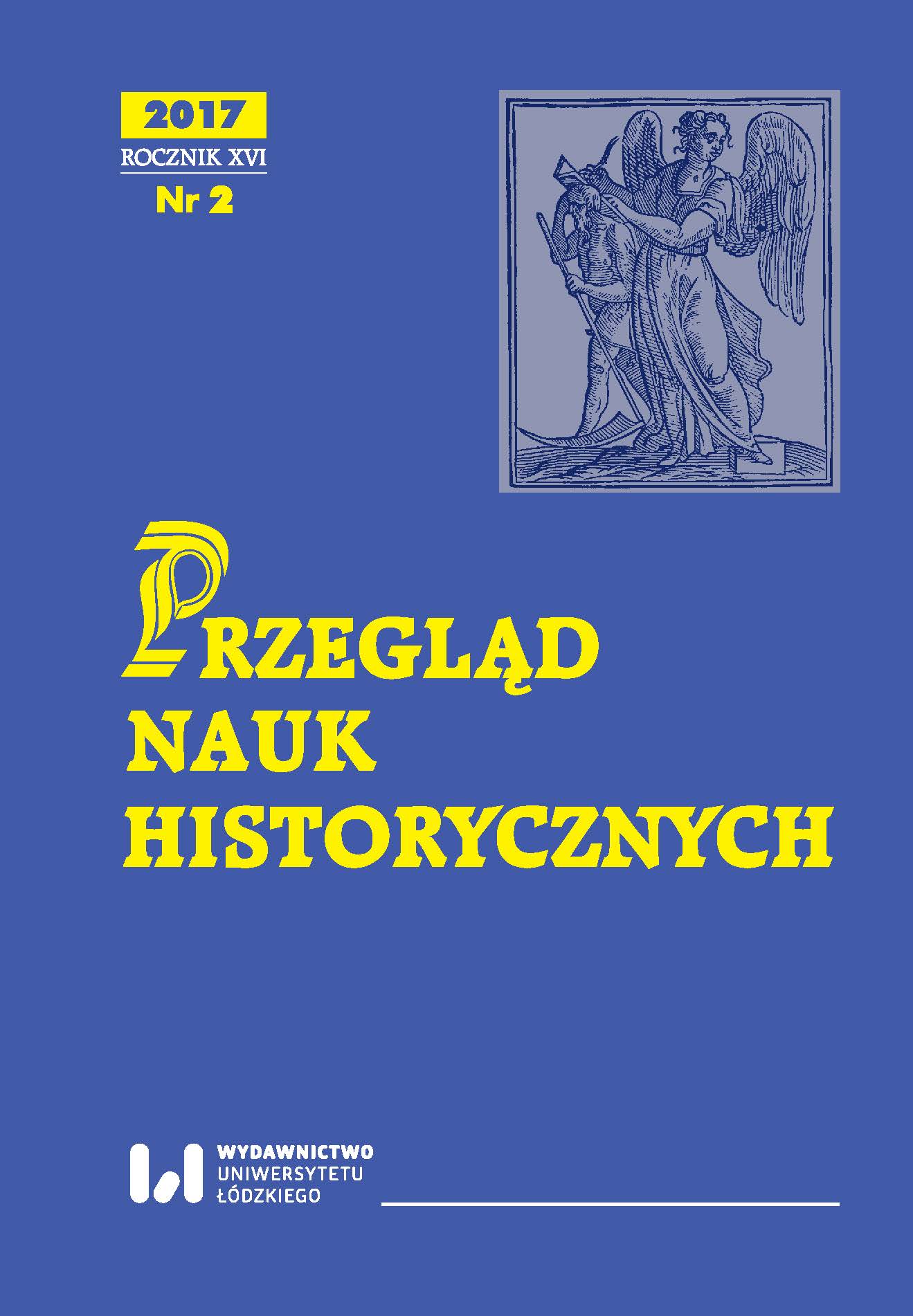Noble estates and their owners in the Orłów county in the second half of the 18th century
DOI:
https://doi.org/10.18778/1644-857X.16.02.04Keywords:
Polish nobility in the 18th century, Orłów country, noble estateAbstract
The Orłów county, being one of the smallest in the Polish-Lithuanian Commonwealth, was a part of the Łęczyca voivodship. The towns, villages and other real estate in this county belonged exclusively to the nobility and to the Catholic Church. The contemporary historians investigating the ownership of these properties in the 16th and 17th centuries unambiguously determined that the accumulation of properties and creation of large estates made up of a dozen or more villages did not occur in the said county. The owners of noble estates were not too wealthy, neither in the country nor in the voivodship. The situation did not change in the next century, as confirmed by the study into the records of the chimney tax in 1775 and the head tax in 1790, which covered the entire Łęczyca voivodship. At the time, the most affluent was the voivode of Łęczyca, Szymon Dzierzbicki, being in possession of the town of Bielawa and eight villages, as well as the voivode of Vitebsk, Józef Sołłohub, the owner of Żychlin, six full villages and a part. In 1790, the largest property, including six villages, belonged to the general of the Russian army, Jan Sołłohub. It confirms that no noble estate that would be composed of over ten towns existed in the Orłów county. The area was dominated by small estates, consisting of one or two villages, or their parts, which mainly belonged to the less affluent nobility. In some cases, a village was owned by two or three noblemen, but sometimes even by thirteen. Over the next 15 years, the situation has not changed significantly since the process of property consolidation did not take place. The group of landowners did not grow smaller, and the analysis of the number of chimneys in the villages of the Orłów county in 1790 indicated that a considerable part of the Orłów nobility was working the land and was also tax exempt for having small estate.
Downloads
References
Księgi grodzkie łęczyckie, varia nr 7, 11 [Archiwum Główne Akt Dawnych]
Google Scholar
Volumina legum, t. VIII, Petersburg 1860.
Google Scholar
Atlas historyczny Polski, t. V (Województwo sieradzkie i województwo łęczyckie w drugiej połowie XVI wieku), cz. 2, red. H. Rutkowski, Warszawa 1998.
Google Scholar
Drozdowski M., Podstawy finansowe działalności państwowej w Polsce 1764–1793. Działalność budżetowa Sejmu Rzeczypospolitej w czasach panowaniaStanisława Augusta Poniatowskiego, Warszawa–Poznań 1975.
Google Scholar
Filipczak-Kocur A., Skarbowość Rzeczypospolitej 1587–1648. Projekty, ustawy, realizacja, Warszawa 2006.
Google Scholar
Kajzer L., Studia nad świeckim budownictwem obronnym województwa łęczyckiego w XIII–XVII wieku, „Acta Universitatis Lodziensis”, Folia Archaeologica 1980,t. I, 1980, s. 3–414.
Google Scholar
Korzon T., Wewnętrzne dzieje Polski za Stanisława Augusta (1764–1794), t. III, Kraków–Warszawa 1897.
Google Scholar
Nycz M., Geneza reform skarbowych sejmu niemego. Studium z dziejów skarbowo-wojskowych z lat 1697–1717, Poznań 1938.
Google Scholar
Romaniuk P.P., Sołłohub (Ursyn Dowojna Sołłohub) Józef Antoni h. Prawdzic (1709–1781), kasztelan żmudzki i witebski, wojewoda witebski, [w:] Polski słownik biograficzny, t. XL, Warszawa–Kraków 2000–2001, s. 319–323.
Google Scholar
Romaniuk P.P., Sołłohub (Ursyn Dowojna Sołłohub) Jan Michał h. Prawdzic (1747–1812?), starosta sannicki, generał w służbie rosyjskiej, [w:] Polski słownik biograficzny, t. XL, Warszawa–Kraków 2000–2001, s. 315–318.
Google Scholar
Sobczak T., Zmiany w stanie posiadania dóbr ziemskich w województwie łęczyckim od XVI do XVIII wieku, „Roczniki Dziejów Społecznych i Gospodarczych” 1955, t. XVII, s. 163–193.
Google Scholar
Szczygielski W., Struktura społeczno-własnościowa szlachty łęczyckiej w początkach drugiej połowy XVII w., „Acta Universitatis Lodziensis”, „Zeszyty NaukoweUniwersytetu Łódzkiego”, Nauki Humanistyczno-Społeczne, Folia Historica,Seria I, „Feudalizm”, 1979, z. 57, s. 151–166.
Google Scholar
Wajs H., Materiały skarbowe w aktach ziemskich i grodzkich w AGAD (na przykładzie akt sieradzkich i łęczyckich), „Miscellanea Historico-Archivistica” 1999,t. X, s. 76–115.
Google Scholar
Wierzbowski T., Akty ziemskie i grodzkie XIV–XVIII w. województw wielkopolskich [w:] Monumenta iuris, t. VI, Warszawa 1917, s. 4–178.
Google Scholar
Zajączkowski S.M., Powiat orłowski do lat siedemdziesiątych XVI wieku. Studia z dziejów osadnictwa struktury własnościowej i stosunków kościelnych, Łódź1996.
Google Scholar
Zajączkowski S.M., Sieć parafialna na obszarze przedrozbiorowego powiatu orłowskiego do końca XVI wieku, Kutno 2001.
Google Scholar
Zajączkowski S.M., Uwagi o przeszłości Orłowa do lat siedemdziesiątych XVI wieku, „Rocznik Łódzki” 1996, t. XLIII, s. 53–72.
Google Scholar
Żerek-Kleszcz H., Majętność oporowska i Sołłohubowie w XVIII wieku, [w:] Oporów. Stan badań. Materiały z sesji naukowej zorganizowanej z okazji 50 rocznicyMuzeum w Oporowie 22 listopada 1999 roku, Oporów 2000, s. 135–148.
Google Scholar
Downloads
Published
How to Cite
Issue
Section
License
Copyright (c) 2017 © Copyright by Authors, Łódź 2017; © Copyright for this edition by Uniwersytet Łódzki, Łódź 2017

This work is licensed under a Creative Commons Attribution-NonCommercial-NoDerivatives 4.0 International License.













